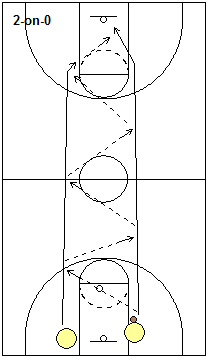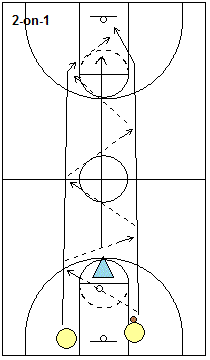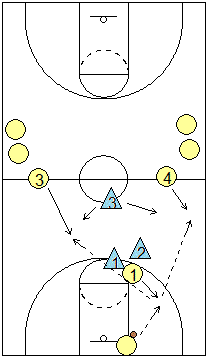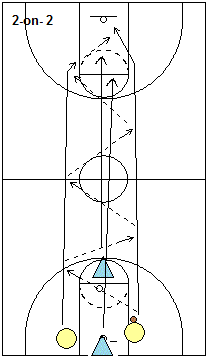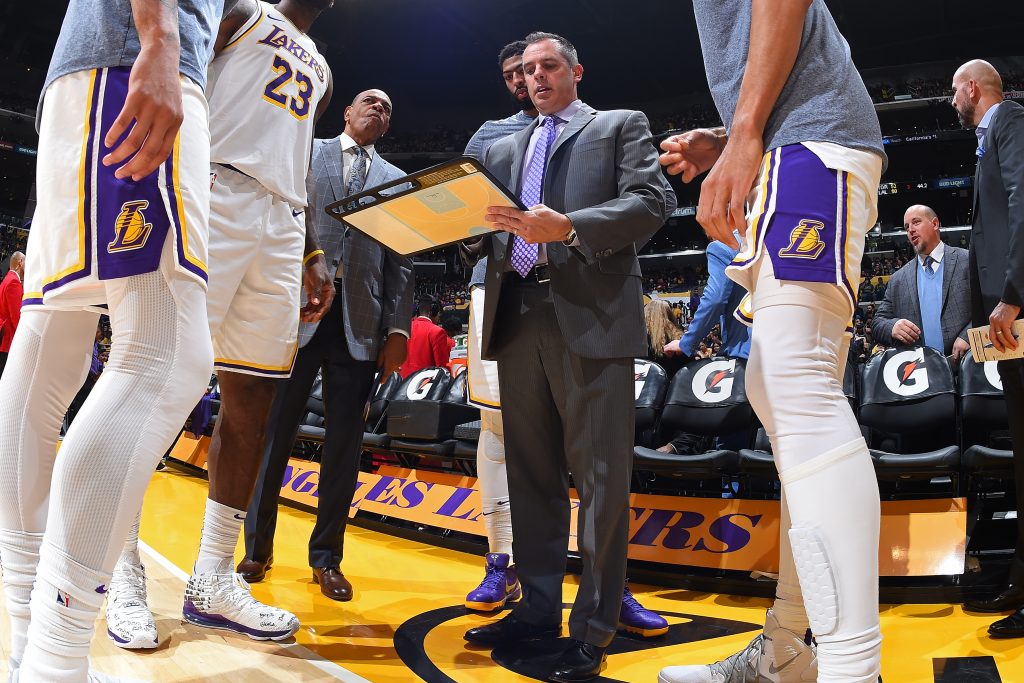Shooting Drill 1: "12 Sets Drill"

Have players partner-up and use all of your baskets. Each player will shoot 12 sets of shots. Each set consists of a 3-pointer (yellow), a shot-fake with jump shot (green), a catch and shoot jump shot (blue), and a lay-up (pink).
We start in one corner and rotate around each of the 12 spots (seen in black in the diagram). The partner rebounds and passes back to the shooter. We switch the shooter/rebounder after those four shots are taken, both players getting to shoot at the same spot before moving to the next spot.
Shooting Drill 2: "3-2-1"
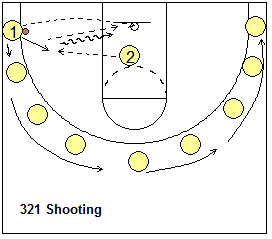
This is a fun competitive drill. Players partner-up, Use all of your baskets. Each player shoots nine sets of shots (see diagram). Each set consists of a 3-pointer, a shot-fake with jump shot, and a lay-up. We start in one corner and rotate around each of the nine spots (seen in black in the diagram).
The partner rebounds and passes back to the shooter. We rotate shooters after each set (spot) of "3-2-1", so the shooter becomes the rebounder and vice-versa. The two players compete against each other and keep track of their individual scores. Each made 3-pointer = 3 points, a jump shot = 2 points, and a lay-up = 1 point. The loser does push-ups.
Shooting Drill 3: "45" Shooting

This is another fun, challenging drill. Use both baskets with half of the team at each end. Each player shoots nine sets of shots. We start in one corner and rotate around each of the nine spots (seen in black in the diagram). Each set consists of a 3-pointer and a mid-range jump shot.
A rebounder rebounds the 3-point shot and passes back to the shooter who shot fakes and shoots a mid-range jumper. After the jump shot, the shooter becomes the rebounder for the next shooter. Each player keeps track of his/her own score. Three-pointers = 3 points and mid-range jumpers = 2 points.
Shooting Drill 4: "Celtic Drill"
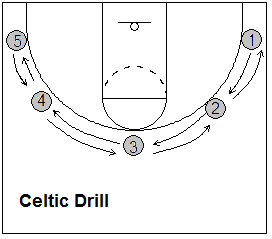
This drill comes from Archie Miller . You can do this with two or three players - one shooter and the other(s) rebounding for the shooter. The shooter starts in one corner (see diagram below). There are five shooting spots. He/she must make two in a row at each spot before moving on to the next spot. Once the shooter reaches the opposite corner and makes two there, he/she then stays there and makes two more and moves on.
The goal is to get all the way around and back within two minutes. If a player makes it in less than two minutes, the time is recorded and then next time he/she will try to beat the previous record. Also, if the shooter gets around in less than two minutes, he/she keeps going for the entire two minutes to see how far he/she can get - maybe to spot 12 or 13 for example.
